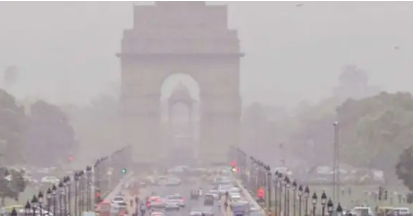


According to the Central Pollution Control Board, pollution levels in Delhi and its suburbs rose over night, with the capital’s Air Quality Index (AQI) measuring 365 at 9 a.m. on November 21. At 4 p.m. on November 20, the city’s AQI was 348, down from 301 on Sunday. Every day at 4 p.m., the 24-hour average AQI was recorded as 319 on Saturday, 405 on Friday, and 419 on Thursday. The air quality was also rated as “poor” in the nearby cities of Ghaziabad (340), Gurugram (324), Greater Noida (306), Noida (338), and Faridabad (336).
An AQI of 0–50 is regarded as “good,” 51–100 as “satisfactory,” 101–200 as “moderate,” 201–300 as “poor,” 301–400 as “very poor,” 401–450 as “severe,” and 450 and above as “severe plus.” In response to a decrease in pollution levels brought on by favorable wind speed and direction, the Center lifted strict curbs on Saturday, including a prohibition on construction work associated with linear projects and the entry of trucks that emit pollution into Delhi.
These actions make up the last phase, or Stage IV, of the Center’s Graded Response Action Plan (GRAP), which is its strategy for reducing air pollution.The National Capital Region and Adjoining Area Commission for Air Quality Management (CAQM), a statutory body tasked with developing strategies to combat pollution in the area, has asked Delhi and NCR states to lift all emergency measures. These measures allow only CNG, electric, and BS VI-compliant vehicles from other states to enter Delhi, with the exception of those providing essential services.